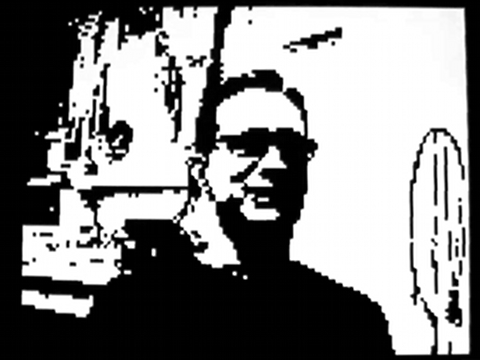The Circuit
In the circuit below the LM1881 (IC1) separates the synchronisation pulses from the video signal, allowing the Arduino to identify a specify line of the picture. To read the information we need to sample the changing voltage along the line, which for PAL takes 52uS. The Arduino's AnalogRead is too slow (taking about 100uS per sample). The solution used here is to digitise the video signal using a simple comparator circuit, which can then be read by a DigitalRead operation that takes about 4uS, allowing for operations to store the read value, this allows at least 8 samples to be made per line for the picture. The comparator (AD811, IC3) sets its output either high or depending on whether the video signal is above or below the reference level. The reference-level is set dynamically by the Arduino. To obtain grey-level information, the same line can be successively sampled with changing reference-levels, or IC4 can also be used to set a second reference level and the two outputs read in parallel. Using lower-level code Peter Knight suggests tens of samples should be possible per line, using the same hardware. IC2 is a simple unity gain buffer.
While the Eye Shield can take a colour input, only grey-level information can be processed.

в кратце: на ардуинке делается простейший чб видеозахват
так как аналоговое чтение состояния ноги длится на ардуине непозволительно долго автор с помощью ОУ строку переводит в цифровой вид, тобишь делать ЧБ картинку, и это цифровое состояние считывает. уровень который собсно определяет чёрная точка или белая задаётся ардуиной.
говорит что получается оцифровать 8 точек за строку а если поднапрячся то и все 10.
в примере он там выводит на матрицу 8х8 картинку с камеры =)
ещё есть ссылка на форум где обсуждается возможность получения 8 битной картинки 32х32

типа раз можно успевать генерировать видеосигнал то можно и считывать.


